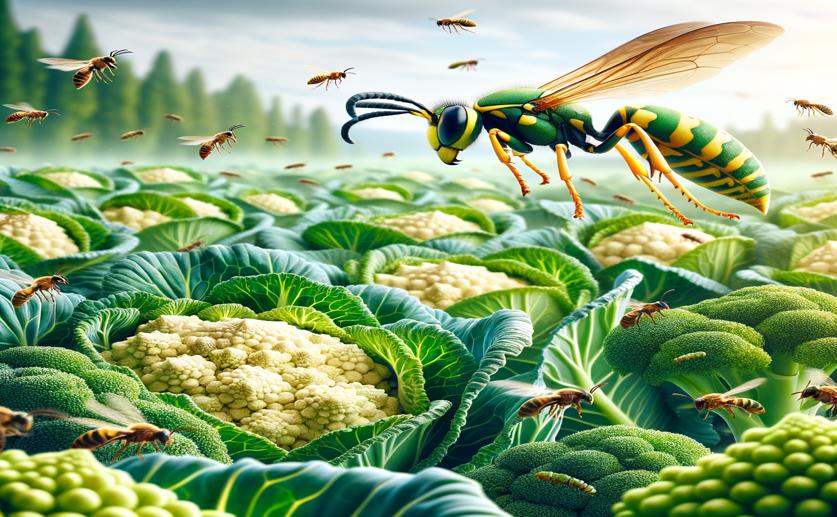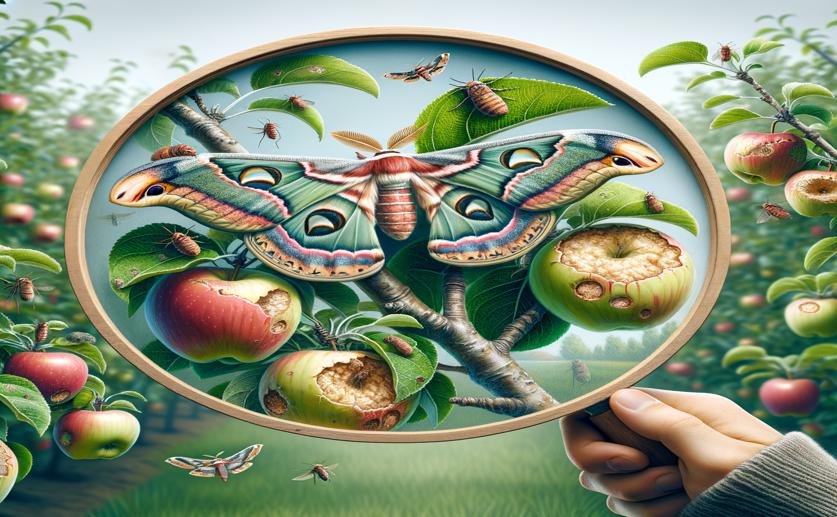
Environment News
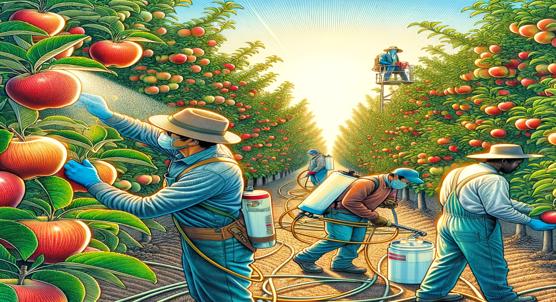
 23rd July, 2024
| Greg Howard
23rd July, 2024
| Greg Howard
Measuring Skin Exposure to Pesticides for Workers in Apple Orchards
A University of Bordeaux study reveals significant variability in captan residues on apple orchards, emphasizing the need for better safety protocols to protect agricultural workers from potential health risks, including cancer, due to pesticide exposure.

 23rd July, 2024
| Jenn Hoskins
23rd July, 2024
| Jenn Hoskins
How Environment and Plants Affect Chemical Changes in Lake Sediments
Researchers from Ben-Gurion University revealed that different aquatic plants decompose at varying rates, significantly impacting oxygen levels in water. This study underscores the need to consider plant-specific traits when managing aquatic ecosystems to preserve water quality.

 23rd July, 2024
| Jenn Hoskins
23rd July, 2024
| Jenn Hoskins
Long-term Air Pollution Linked to Mental Well-Being, Depression, and Anxiety
A Portuguese study found no significant link between long-term exposure to PM10 air pollution and mental health issues, contrasting with earlier research. It highlights the need for robust air quality data and careful consideration of confounding factors in future studies.
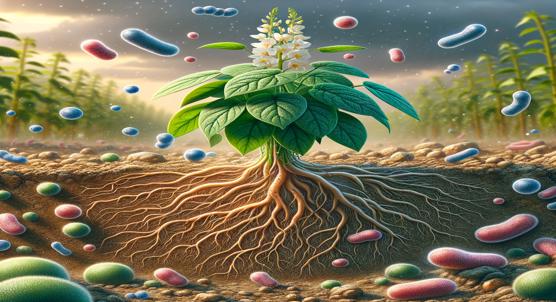
 23rd July, 2024
| Jim Crocker
23rd July, 2024
| Jim Crocker
How Beneficial Microbes Help Lentil Plants Thrive in Polluted Soil
Research from Aligarh Muslim University shows that symbiotic microbes like Rhizobium bacteria and mycorrhizal fungi can significantly boost lentil growth and reduce heavy metal uptake in fly ash-amended soils, offering a promising strategy for enhancing food security.

 22nd July, 2024
| Jenn Hoskins
22nd July, 2024
| Jenn Hoskins
Using Chestnut and Watermelon Peels to Clean Eosin Yellow Dye from Water
The University of the Punjab's study shows that citric acid-treated chestnut and watermelon peels can efficiently remove toxic Eosin yellow dye from wastewater, offering an eco-friendly and cost-effective solution to industrial pollution.
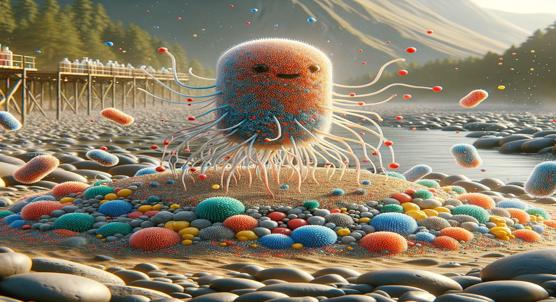
 21st July, 2024
| Jenn Hoskins
21st July, 2024
| Jenn Hoskins
Friendly Microbes Break Down Chemicals in Riverbed Gravel and Sand
Researchers at Queen Mary University of London discovered that dimethylsulfide (DMS) is a key driver of methane production in river sediments, revealing the significant role of specific methanogens. This insight could refine global methane budgets and inform climate models.
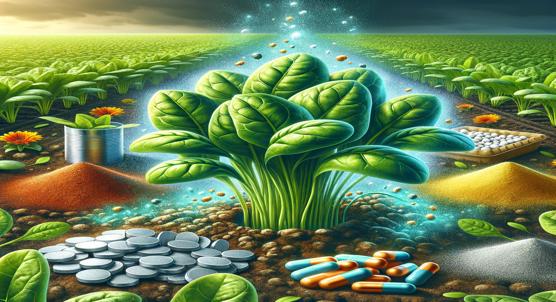
 20th July, 2024
| Jim Crocker
20th July, 2024
| Jim Crocker
Boosting Spinach Nutrition and Reducing Soil Toxins with Various Zinc Sources
Recent research from Northwest A&F University shows that zinc oxide nanoparticles can significantly reduce cadmium contamination in soil and plants, promoting healthier spinach growth and offering a promising solution for mitigating heavy metal pollution in agriculture.
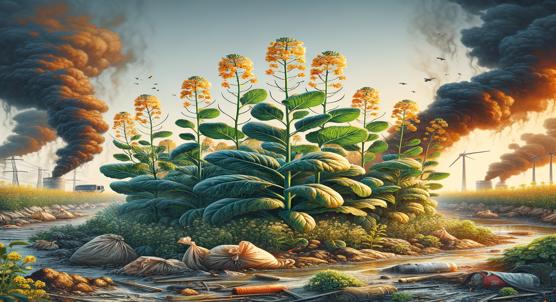
 20th July, 2024
| Jim Crocker
20th July, 2024
| Jim Crocker
How Heatwaves and CO₂ Levels Affect Mustard Plant Pollution Cleanup
Heatwaves, worsened by climate change, reduce plant biomass and phytoremediation efficiency. A study on Indian mustard shows higher CO2 levels can partially offset these effects, enhancing resilience and antioxidant activity during heat stress.

 20th July, 2024
| Greg Howard
20th July, 2024
| Greg Howard
Forest Owner Views on Temporary, Voluntary Conservation
Finnish forest owners favor conservation programs that support biodiversity and carbon sequestration, with a preference for non-profit organizations. They prefer shorter contracts and higher payments, highlighting the need for tailored approaches to conservation.

 20th July, 2024
| Jenn Hoskins
20th July, 2024
| Jenn Hoskins
How Storage Conditions Affect Toxin Levels in Wheat
A study by Cranfield University reveals how storage conditions like moisture and temperature affect mycotoxin levels in wheat. Findings show significant variations in toxin concentrations, emphasizing the need for rigorous monitoring to ensure food safety.

 20th July, 2024
| Jenn Hoskins
20th July, 2024
| Jenn Hoskins
How Cherry Blossoms React to Increased Ozone: Health and Emissions
Elevated ozone levels initially stimulate Prunus × yedoensis seedlings but ultimately harm their physiology, reducing photosynthesis, pigment content, and cell integrity. This study underscores the need to manage ozone pollution in urban areas to protect plant health.

 19th July, 2024
| Jenn Hoskins
19th July, 2024
| Jenn Hoskins
Using CO2 Lasers to Label Fresh Produce: Impact on Quality, Safety, and Cost
Kansas State University found CO2 laser-labeling for produce reduces environmental impact and maintains visual quality but increases microbial risk on text-labeled items. Addressing this is key for safer, sustainable labeling.

 19th July, 2024
| Jim Crocker
19th July, 2024
| Jim Crocker
Natural Antimicrobial Building Materials Enhanced with Hops and Curly Sorrel
Waste cooking oil composites enriched with hops or sorrel root show promise for construction, offering high strength and significant antibacterial and antifungal properties. This sustainable approach could help mitigate microbial infections in built environments.
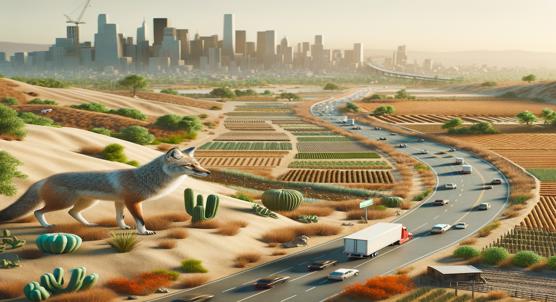
 19th July, 2024
| Jenn Hoskins
19th July, 2024
| Jenn Hoskins
How Predators Adapt to Changes in Human-Altered Landscapes
The Southern Illinois University study reveals how animals adapt their movements and habitat choices to changing landscapes. This research is vital for crafting effective conservation strategies, ensuring wildlife can thrive despite human land modifications.

 19th July, 2024
| Greg Howard
19th July, 2024
| Greg Howard
Leaf Nutrient Patterns in Wild Apple Trees Over Time in a Natural Forest
A study by the Chinese Academy of Sciences reveals the nutrient dynamics in wild apples, showing seasonal changes in nitrogen, phosphorus, and potassium levels. Findings highlight the importance of nutrient balance for conservation and ecosystem management.

 18th July, 2024
| Greg Howard
18th July, 2024
| Greg Howard
Fish Trade Conceals Household Use of Biodiversity in Wild Food Systems
Cornell researchers reveal that declining biodiversity in Cambodia's Tonlé Sap impacts household food security. Households consume 43% of species caught, selling just 9%. The study underscores the need for sustainable diets to support both human and planetary health.
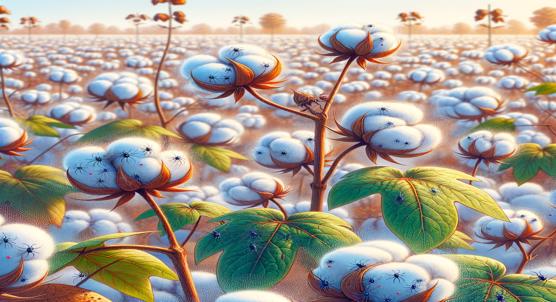
 18th July, 2024
| Jim Crocker
18th July, 2024
| Jim Crocker
Spider Mite and Bacteria Presence in Cotton Fields
Spider mites threaten cotton crops in Türkiye, with Tetranychus urticae and Tetranychus turkestani being the most common. The study links their pesticide resistance to endosymbionts like Wolbachia and Rickettsia, suggesting new pest management strategies are needed.
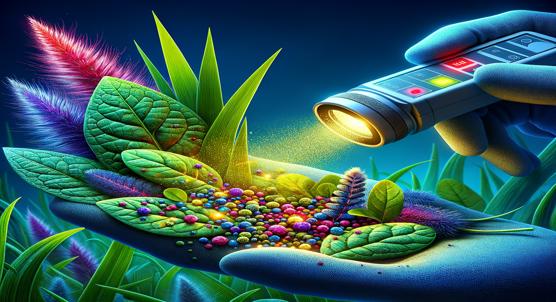
 17th July, 2024
| Jenn Hoskins
17th July, 2024
| Jenn Hoskins
New Fluorescent Sensor Detects Mercury and Iron in Vetiver Grass and Spinach
Researchers at Islamic Azad University developed a novel fluorescence probe using mesoporous silica to detect mercury and iron ions in food. This sensitive and selective method helps monitor heavy metal pollution, crucial for protecting ecosystems and human health.

 17th July, 2024
| Jenn Hoskins
17th July, 2024
| Jenn Hoskins
Eco-Friendly Nanoparticles from Waste for Efficient Dye Removal
Researchers at Universidad Autónoma de Nuevo León have created eco-friendly copper oxide nanoparticles using waste papaya peel. These nanoparticles efficiently degrade dye pollutants, offering a cost-effective and sustainable solution for wastewater treatment.

 17th July, 2024
| Jenn Hoskins
17th July, 2024
| Jenn Hoskins
Turning Date Palm Seeds into Eco-Friendly Material for Cleaning Up Dye Pollution
Scientists at King Saud University have developed a method to create hydrochar from date palm seeds using microwave-assisted hydrothermal carbonization. The optimized process enhances the hydrochar's ability to adsorb pollutants, making it effective for wastewater treatment.
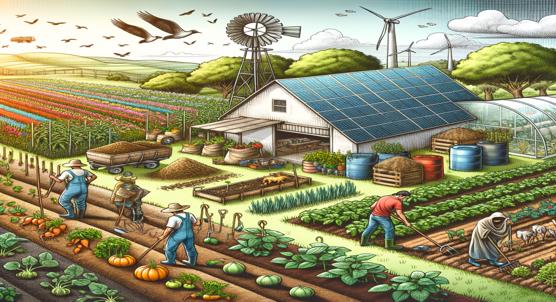
 17th July, 2024
| Jenn Hoskins
17th July, 2024
| Jenn Hoskins
Challenges Faced by Organic Farmers in Transition to Eco-Friendly Farming
Organic farming in Central Uganda shows promise with diverse crop adaptation and integrated animal farming. However, challenges like limited waste recycling and water harvesting equipment remain. Investing in these areas could enhance sustainability and resilience.

 17th July, 2024
| Greg Howard
17th July, 2024
| Greg Howard
Challenges in Studying Livestock Attacks by Predators
A study by the State University of New York reveals that understanding livestock depredation at different scales can lead to more effective strategies for mitigating human-carnivore conflicts. Tailored interventions could reduce economic burdens and promote coexistence.
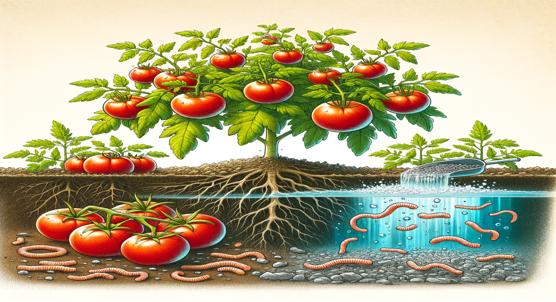
 16th July, 2024
| Jim Crocker
16th July, 2024
| Jim Crocker
Using Worms to Clean Wastewater Helps Tomato Growth and Reduces Metal Absorption
Vermicompost significantly reduces heavy metal accumulation in tomatoes irrigated with wastewater, enhancing plant growth and yield. This study by the University of Agriculture Peshawar suggests vermicompost as a sustainable solution for safer food production in polluted areas.

 16th July, 2024
| Jenn Hoskins
16th July, 2024
| Jenn Hoskins
Carbon Footprint of Mixed Farming and Grazing Beef Systems Using Long-Term Data
A study by the Instituto Nacional de Investigación Agropecuaria reveals that mixed crop-livestock systems can significantly reduce greenhouse gas emissions through better soil carbon management, offering a sustainable alternative to high-input farming in South America.

 16th July, 2024
| Jenn Hoskins
16th July, 2024
| Jenn Hoskins
A New Way to Grow Sugar Beets Without Extra Water by Planting in Autumn
Researchers in Türkiye found that autumn-sown sugar beets can thrive in the Aegean Coastal Zone without irrigation using ridge sowing. This method conserves water and ensures high yields and sugar content, offering a sustainable alternative for water-scarce regions.

 16th July, 2024
| Jenn Hoskins
16th July, 2024
| Jenn Hoskins
Tracking Polar Bear Movements with Fur- and Ear-Mounted Satellite Tags
York University researchers have developed innovative fur- and ear-mounted telemetry tags to track polar bears of all ages and sexes. This breakthrough addresses data gaps and enhances our understanding of polar bear behavior, crucial for conservation in a changing Arctic.
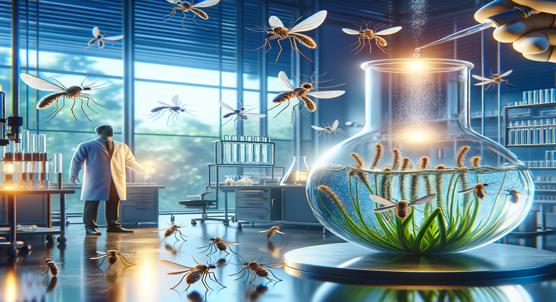
 14th July, 2024
| Jim Crocker
14th July, 2024
| Jim Crocker
Lab-Made Alfalfa Scent Attracts Pregnant Mosquitoes in Experiments
A study by Addis Ababa University identified key bioactive compounds in alfalfa infusions that attract gravid Culex mosquitoes. This discovery could lead to more effective and efficient mosquito control methods, enhancing disease prevention and public health protection.

 14th July, 2024
| Jenn Hoskins
14th July, 2024
| Jenn Hoskins
Herb Leaf Extract as a Rust Preventer for Carbon Steel in Acidic Conditions
Researchers at Mansoura University found that Verbena Officinalis leaf extract can effectively inhibit carbon steel corrosion in sulfuric acid, achieving a 91.1% inhibition rate by forming a protective barrier, offering a green alternative to toxic inhibitors.
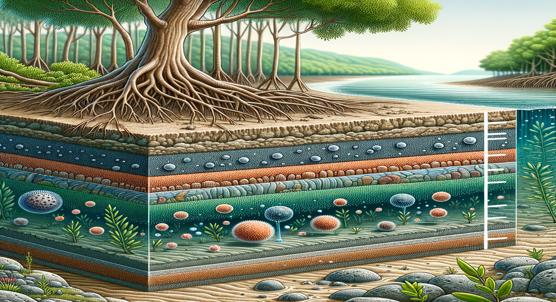
 14th July, 2024
| Jenn Hoskins
14th July, 2024
| Jenn Hoskins
Distribution and Community Formation of Microbes in Mangrove Sediments
Researchers at Shenzhen University have unveiled new insights into Myxococcota, micro-predators that play crucial roles in microbial ecosystems. Their study highlights Myxococcota's diverse habitats, predatory behaviors, and potential for novel antibiotic discovery.

 13th July, 2024
| Jim Crocker
13th July, 2024
| Jim Crocker
Using Sound Tracking to Help Manage Basking Shark Populations
Queen's University Belfast's study using acoustic telemetry reveals detailed migratory patterns of basking sharks in Ireland and Scotland, highlighting the importance of international collaboration for effective conservation of these highly mobile marine species.

 13th July, 2024
| Jenn Hoskins
13th July, 2024
| Jenn Hoskins
How Environment and Genetics Affect Harvest Dates in Sugar Beet Varieties
Research by AREEO highlights optimal harvest times (HD3 and HD4) and stable sugar beet cultivars (Shokoufa and Arya) to boost yield stability. Integrating wild beet genetics and enhancing by-product use can further improve sugar beet's resilience and economic value.

 13th July, 2024
| Jenn Hoskins
13th July, 2024
| Jenn Hoskins
Growing Coastal Marine Microalgae in Wastewater from a Salmon Farming System
A University of Agder study shows microalgae can thrive in aquaculture wastewater, effectively removing nutrients like nitrate and phosphate. This sustainable approach enhances waste management in fish farming and supports a circular bioeconomy in aquaculture.
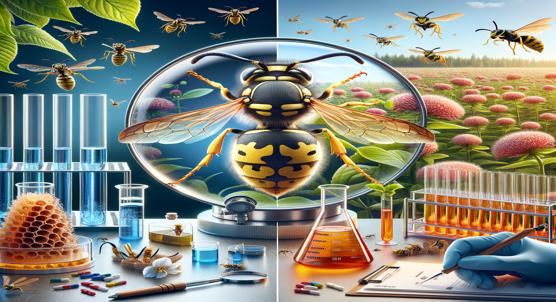
 13th July, 2024
| Greg Howard
13th July, 2024
| Greg Howard
Evaluating the Safety of Insecticides on Beneficial Wasps in Labs and Fields
Research from the University of Trento reveals that while spinosad and λ-cyhalothrin are highly toxic to the parasitoid Ganaspis brasiliensis, cyantraniliprole shows promise as a selective pesticide for managing the spotted wing drosophila in integrated pest management programs.
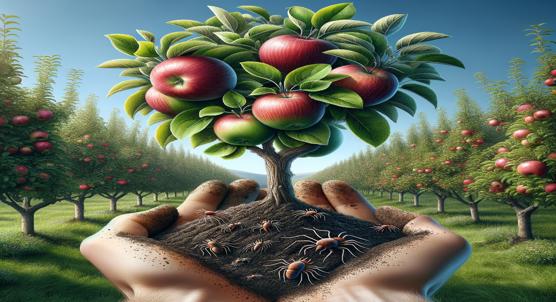
 13th July, 2024
| Jenn Hoskins
13th July, 2024
| Jenn Hoskins
Organic Fertilizers Boost Helpful Mite Populations in Apple Orchards
Boosting native predatory mites with organic fertilizers can naturally control spider mites in apple orchards, enhancing sustainable agriculture. Research shows organic materials promote prey mites, supporting predator mites and reducing pesticide reliance.
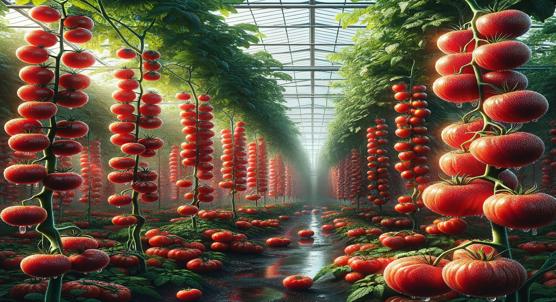
 13th July, 2024
| Greg Howard
13th July, 2024
| Greg Howard
Understanding and Predicting Tomato Cracking in Greenhouses
Tomato fruit cracking is driven by extreme temperature and humidity changes. A study from Northwest A&F University found that managing these environmental factors, using techniques like fruit bagging, can mitigate cracking and improve market value.
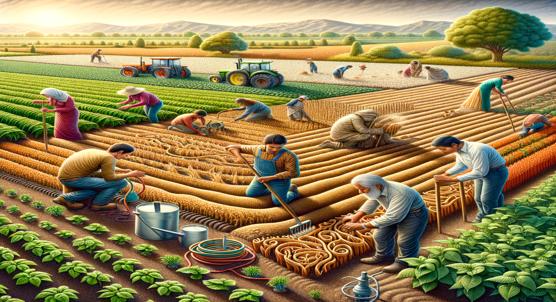
 12th July, 2024
| Greg Howard
12th July, 2024
| Greg Howard
Types of Climate Change Adaptation Among Large-Scale Crop Farmers
Farmers in Romania's southern lowlands are adapting to increased heatwaves and droughts. A study identified three adaptation strategies: efficiency, substitution, and redesign. The findings stress the importance of targeted support to boost farm resilience against climate change.

 12th July, 2024
| Jim Crocker
12th July, 2024
| Jim Crocker
How Water Clarity Affects Feeding and Survival of Young European Smelt
A study by the Thünen Institute reveals that European smelt larvae thrive at moderate turbidity levels (100-200 NTU) but suffer at high levels (300+ NTU). These findings can guide conservation efforts to manage smelt populations in turbid rivers affected by human activities.

 12th July, 2024
| Greg Howard
12th July, 2024
| Greg Howard
How Temperature Changes Affect Fruit Traits at Different Elevations
A study by iDiv on wild fruit species in Madagascar reveals that rising temperatures may not significantly alter fruit traits like size and color, though some species show chemical changes. This highlights the complex interplay of biotic and abiotic factors in ecosystem dynamics.
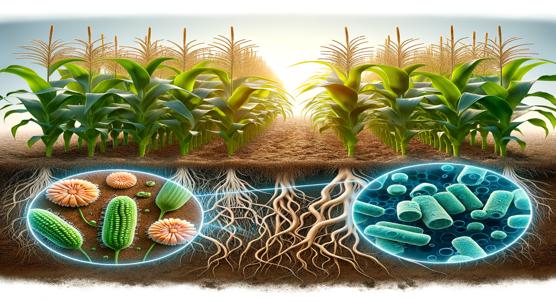
 12th July, 2024
| Jim Crocker
12th July, 2024
| Jim Crocker
How Bacillus Faecalis and Biochar Help Reduce Arsenic Toxicity in Corn
Researchers found that combining composted biochar and rhizobacteria significantly improves maize growth and health under arsenic stress, boosting plant height, root and shoot length, and chlorophyll content, offering a promising solution for arsenic-contaminated soils.

 12th July, 2024
| Greg Howard
12th July, 2024
| Greg Howard
Heat and Radiation Greatly Reduce Microbe Survival in Deep Underground Storage
A study reveals that high temperatures, rather than irradiation, significantly reduce microbial activity in bentonite, a key barrier in nuclear waste storage. This insight helps predict and enhance the long-term stability of deep geological repositories.

 12th July, 2024
| Greg Howard
12th July, 2024
| Greg Howard
Biodegradation of Bioplastic and Oregano Oil Mix in Simulated Soil Conditions
Researchers at Universidade Federal de Santa Catarina found that adding oregano essential oil to PHBV biopolymer films significantly boosts their biodegradation in soil, achieving up to 46% mass loss in 12 weeks. This advance could enhance sustainable packaging solutions.
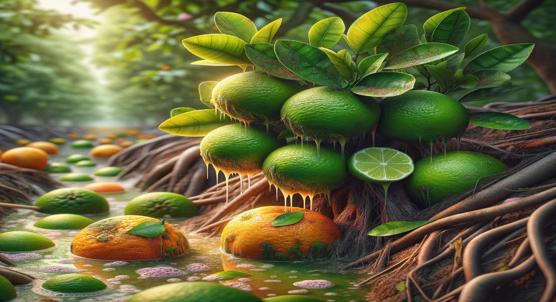
 11th July, 2024
| Jenn Hoskins
11th July, 2024
| Jenn Hoskins
Health Risks from Toxic Metals in Sweet Lime and Oranges Grown with Wastewater
A study by Usak University reveals that citrus fruits irrigated with sewage water have significantly higher levels of toxic metals compared to those watered with fresh water. These findings underscore the need for safe irrigation practices to safeguard public health.

 11th July, 2024
| Jim Crocker
11th July, 2024
| Jim Crocker
Updated Review on Pollution Communication in the Arctic
Arctic communities face mercury exposure from traditional diets. A study by the Inuit Circumpolar Council - Canada highlights the need for better risk communication and social media use to balance nutritional benefits and contaminant risks, emphasizing culturally tailored advice.

 11th July, 2024
| Jim Crocker
11th July, 2024
| Jim Crocker
Improving Urban Gardens with Compost: Analyzing Soil and Vegetable Nutrients
Urban gardening boosts sustainability and community ties but can pose health risks due to soil contamination. A Vienna study found compost reduces harmful elements in produce, and washing veggies lowers toxin levels, offering practical tips for safer urban horticulture.

 11th July, 2024
| Jenn Hoskins
11th July, 2024
| Jenn Hoskins
Are There Downsides for Boll Weevils in Dry Cotton Bolls?
A study reveals that boll weevils from dry cotton bolls have higher reproductive rates, longevity, and feeding activity than those from flower buds or traps. These insights can help develop better pest management strategies for cotton producers.

 11th July, 2024
| Greg Howard
11th July, 2024
| Greg Howard
Rapid Measurement of Airborne Particles and Metals Using Plant Leaves
A study from Guru Ghasidas Vishwavidyalaya reveals that plants like Senna siamea and Alstonia scholaris can effectively capture particulate matter and toxic metals from urban air, highlighting their potential as bio-filters to improve air quality in polluted cities.
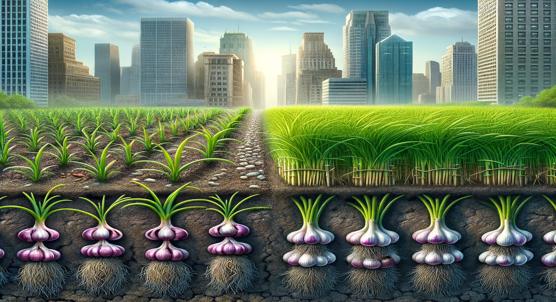
 11th July, 2024
| Jim Crocker
11th July, 2024
| Jim Crocker
How Planting Methods Affect Garlic and Grass Growth in Heavy Metal Soil
A study from Southwest University shows that intercropping garlic with perennial ryegrass significantly boosts the removal of toxic metals like cadmium, chromium, and lead from soil, enhancing plant growth and soil health more effectively than garlic alone.
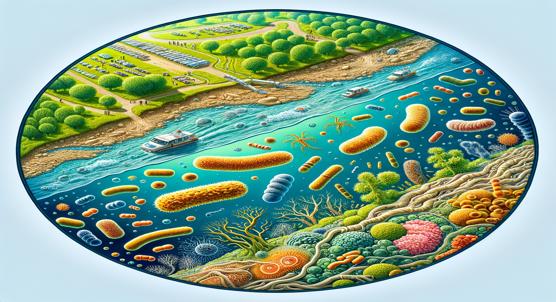
 9th July, 2024
| Jenn Hoskins
9th July, 2024
| Jenn Hoskins
Using Stream Bacteria to Measure Land Use Impact
Auckland University of Technology's study uses 16S rRNA gene sequencing to analyze bacterial communities in New Zealand streams, revealing how land use influences stream ecosystems. This advanced genomic approach offers deeper insights for environmental monitoring and management.

 9th July, 2024
| Jenn Hoskins
9th July, 2024
| Jenn Hoskins
Health Risks from Contaminated Green Leafy Vegetables in Ambagarh Chowki
A study in India found that leafy vegetables, particularly spinach, contain high levels of harmful elements like lead and arsenic, exceeding WHO limits. This poses significant health risks, highlighting the need for stricter safety measures in agriculture.

 9th July, 2024
| Greg Howard
9th July, 2024
| Greg Howard
Winter Weather Effects on Activity of an Invasive Predator in Northern Regions
Raccoon dogs in Finland remain active even in harsh winters, unlike native foxes and badgers. This adaptability, aided by human food sources, could make them a growing threat to cold ecosystems as climate change leads to milder winters, impacting native species and biodiversity.
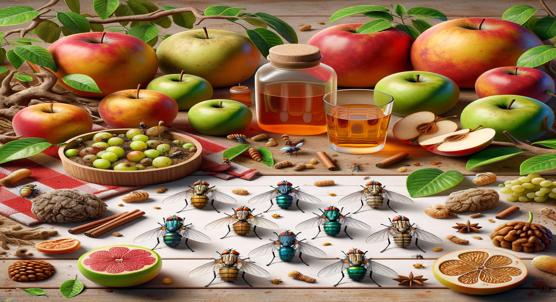
 9th July, 2024
| Jenn Hoskins
9th July, 2024
| Jenn Hoskins
How Health and Environment Impact Fruit Fly Attraction to Lures
Researchers at the University of Pretoria found that nutritional status, age, and temperature significantly influence fruit fly lure responses. These insights can refine trapping systems and improve pest management, making agricultural practices more sustainable.

 8th July, 2024
| Jim Crocker
8th July, 2024
| Jim Crocker
Humid Heat Causes Anxiety by Disrupting Gut Health and Bile Acid Processing
Recent research from Jinan University reveals that humid heat can induce anxiety-like behavior in male mice by disrupting gut bacteria and increasing brain inflammation. Findings suggest probiotics could help manage anxiety disorders triggered by such environmental stressors.
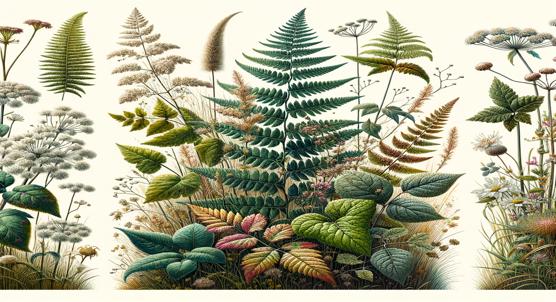
 8th July, 2024
| Greg Howard
8th July, 2024
| Greg Howard
How Propylparaben and Dichloropropylparaben Affect Land Plants
A study reveals that propylparaben and dichloropropylparaben in soil, from urban sludge and wastewater, harm plant growth and cellular health. These compounds disrupt root elongation, cell cycles, and antioxidant defenses, posing risks to plants and ecosystems.
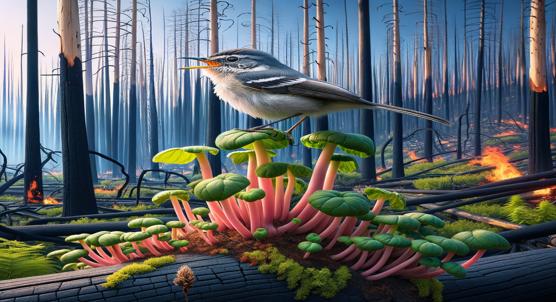
 7th July, 2024
| Jim Crocker
7th July, 2024
| Jim Crocker
Habitat and Recovery of the Coastal California Gnatcatcher After Wildfires
The Coastal California Gnatcatcher, a threatened species, faces habitat loss and wildfire threats. A U.S. Geological Survey study reveals 23% occupancy in surveyed areas, stressing the need for fire management and native plant restoration to aid recovery and conservation efforts.
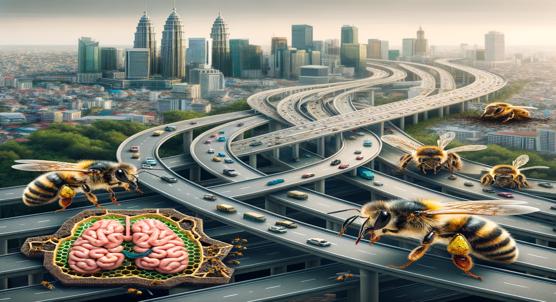
 7th July, 2024
| Greg Howard
7th July, 2024
| Greg Howard
More Urban Roads Linked to Gut Damage in Social Bees
Urbanisation harms bees by causing histological damage to their midgut, crucial for digestion. A study found bees in polluted areas had more cellular disorganisation and cell death, affecting their health and pollination roles, underscoring the need for conservation efforts.

 7th July, 2024
| Greg Howard
7th July, 2024
| Greg Howard
How Trees Remember Environmental Stress in Their Growth Patterns
Droughts drive wood adaptations in hickory trees in Mexico's Montane Cloud Forests, altering latewood width and xylem vessels. This study reveals how past droughts influence tree water transport, crucial for understanding plant resilience amid climate change.

 7th July, 2024
| Jenn Hoskins
7th July, 2024
| Jenn Hoskins
Elemental Composition and Health Risk of Deep-Sea Fish in the Levantine Basin
A study by Mersin University found varying levels of metal contamination in deep-sea fish from Mersin Bay, with arsenic posing the highest health risk. Continuous monitoring is essential to ensure seafood safety.

 6th July, 2024
| Greg Howard
6th July, 2024
| Greg Howard
Not Enough Pollinators Often Reduce Crop Yields Globally
Pollinator decline threatens global food security by limiting crop yields. Rutgers research shows 28-61% of crops like blueberries, coffee, and apples are affected. Boosting pollinator visits could close yield gaps by 63%, emphasizing the need for conservation efforts.
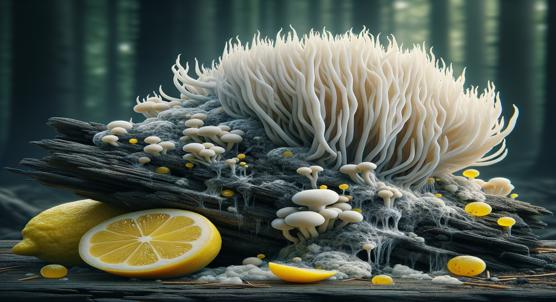
 6th July, 2024
| Jim Crocker
6th July, 2024
| Jim Crocker
Boosting Breakdown of Harmful Chemicals Using White Rot Fungus and Citric Acid
Researchers at Beijing University found that citric acid boosts the ability of the white-rot fungus Trametes versicolor to degrade the harmful pollutant benzo[a]pyrene in soil, achieving a 43.7% removal rate in 35 days. This approach could enhance bioremediation efforts.

 6th July, 2024
| Jenn Hoskins
6th July, 2024
| Jenn Hoskins
Using Airborne LiDAR to Predict Fire Risk in Mediterranean Forests
Researchers at the University of Bari have shown that airborne LiDAR data can accurately estimate fine dead fuel load in Mediterranean forests, aiding wildfire monitoring and prevention. This innovative approach enhances forest management and helps mitigate wildfire risks.
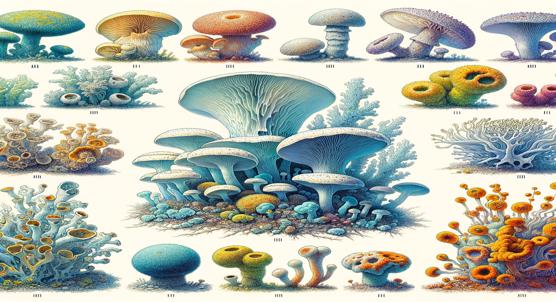
 6th July, 2024
| Greg Howard
6th July, 2024
| Greg Howard
Comparing Fungi in Different Lichens Across Continents
Lichens, complex ecosystems known as holobionts, are shaped more by their host genus than by geographical location, reveals a study from Sunchon National University. This insight advances our understanding of lichen ecology and the roles of their diverse fungal communities.

 6th July, 2024
| Jim Crocker
6th July, 2024
| Jim Crocker
Comparing Climate Preferences in Different Habitats for Persian Fallow Deer
The study on Persian fallow deer in Iran reveals climate differences between original and translocated areas, suggesting the species may adapt to new conditions. This emphasizes the need to consider climate variables in future conservation efforts to ensure their survival.

 6th July, 2024
| Jenn Hoskins
6th July, 2024
| Jenn Hoskins
Improving Sugar Beet Waste Breakdown with Controlled Oxygen Levels
A study from Wroclaw University shows that controlling dissolved oxygen tension can optimize the biodegradation of industrial wastewater. Lower oxygen levels improved pollutant removal and reduced costs, offering a more efficient and eco-friendly treatment method.
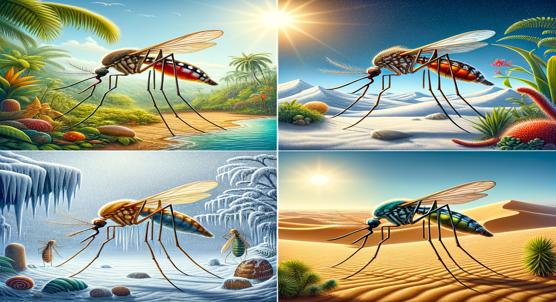
 6th July, 2024
| Jenn Hoskins
6th July, 2024
| Jenn Hoskins
Genetic Variation of Mosquitoes in Different Climate Zones
Culex tritaeniorhynchus mosquitoes, key vectors of Japanese encephalitis in China, show significant genetic diversity influenced by climate. This study's insights into their population dynamics can guide targeted mosquito control strategies to curb disease spread.
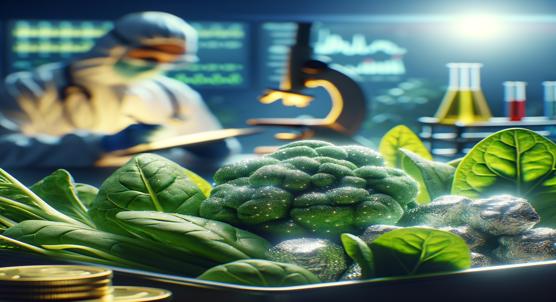
 3rd July, 2024
| Jenn Hoskins
3rd July, 2024
| Jenn Hoskins
Heavy Metal Contamination in Leafy Vegetables: Health Risks and Safety Measures
Heavy metal contamination in leafy vegetables exceeds safety limits, posing health risks. University of Poonch's study calls for strict monitoring, as marketed veggies show higher metal levels than local ones. Key culprits include cadmium, lead, and nickel.

 3rd July, 2024
| Jenn Hoskins
3rd July, 2024
| Jenn Hoskins
How Common Bean Roots Adapt to Water Stress by Growing Thicker and Deeper
Recent research on common bean genotypes reveals how root plasticity—roots' ability to adapt their growth—can improve drought resistance and nutrient uptake. Genotypes WB-N2 and WB-216 show high adaptability, offering potential for breeding more resilient crops.


